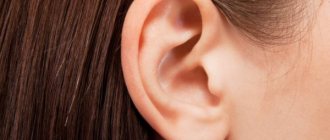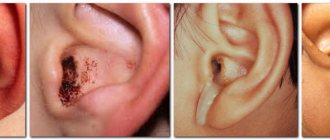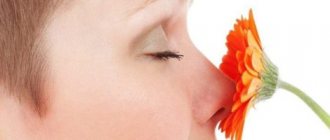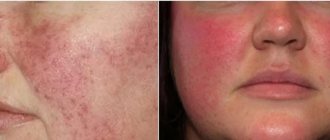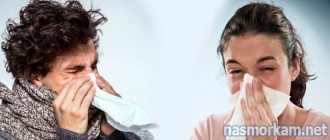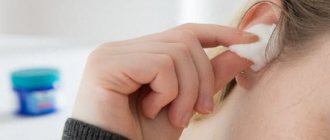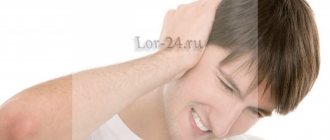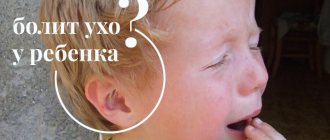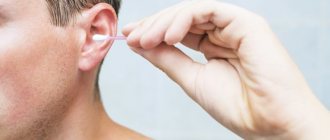Bones, muscles, ligaments
Ear pain can have internal and external manifestations. The ear system is complex and consists of the outer, middle and inner ear. All sections and elements of the ear zone: bones. Cartilage, membrane, etc. are closely interconnected with each other. When there is pain inside the ear, doctors accurately determine the cause of such pain:
- if elements of the auditory system are damaged, then these are mechanical reasons;
- if overheating or hypothermia - then thermostatic;
- after the negative impact of reagents on the body or ear area - chemical;
- in case of sudden noise or a jump in external pressure - physical;
- caused by bacteria, viruses, microbes, fungi - inflammatory.
Could these same reasons accompany external ear pain? And what to do when such pain appears? Read our material.
The close relationship of all elements of the ear system can provoke pain in one area or another of the ear in case of disease of any organ and for a variety of reasons. So, with otitis media, pain is possible not only inside the ear, but also outside. Pain in the outer ear can accompany perforation or rupture of the eardrum, infectious diseases of the inner ear, etc. Therefore, if you have pain in the external concha, you should not write off serious internal diseases of the ear system. And since the ear, throat and nose are closely interconnected, diseases of each of these organs can manifest themselves as pain outside the ear. And not only these. Medical research statistics have proven that even pain from joints and organs distant from the ears can be transmitted to the ear.
Cartilage
If the cartilage of the ear hurts, then most likely it is a bruise, an injury to the external organ of hearing. Cartilage consists of cellular and noncellular elements, the latter giving it flexibility and elasticity. These characteristics help the cartilage to rarely be injured. But if the blow to the ear area is strong or the mechanical damage is associated with a rupture or cut of tissue, then this will cause pain in the outer part of the ears. Also, the occurrence of pain can be influenced by temperature: frostbite or burns. Then the integrity of the tissue is also compromised and painful microflora develops. When harmful chemicals get on the surface of the ears, pain also occurs.
Pain in the cartilage of the outer ear can also be caused by:
- allergies;
- infection;
- inflammation of the trigeminal, intermediate or glossopharyngeal nerves.
Often pain in cartilage is a symptom of perichondritis, an inflammatory process in the perichondrium and skin. When inflammation covers all the cartilage of the ear, doctors diagnose chondroperichondritis. This disease may be a consequence of a cold on the legs, when inflammatory microbes spread to all organs of the ear, nose and throat, which are closely connected to each other. To avoid such complications, it is necessary to undergo treatment for colds on time and, most importantly, to complete it.
Ear tip from above
All the same reasons can cause pain at the tip of the ear. To these can be added occipital neuralgia, when inflammation develops in the nerve trunks near the face. Then the pain can affect not only any area of the outer auricle, but also the entire head. Joint inflammation, especially of the jaw joints, can also be the cause of this type of pain. Then the pain spreads to any part of the ear. Often pain at the tip of the ear is caused by insect bites or the appearance of a boil. Any disease must be diagnosed in a clinic. Otherwise, you can be treated for acne (rashes and boils), but in fact the cause will be a disease of the joints of the jaw part of the head.
Ear shell
The auricle consists of cartilage and perichondrium. Therefore, any disease that causes pain in the cartilage is also the cause of pain on the outside of the ear. The same perichondritis of the auricle and the development of chondroperichondritis. There are 2 types of this inflammation: serous and purulent. Both of them require immediate treatment. The causative agents of the disease are bacilli of various modifications, including the dangerous Pseudomonas aeruginosa; staphylococci, including aureus, etc. These are dangerous pathogens of the most complex diseases of the ear area. They cannot be left to chance; these types of pathogenic microbes quickly spread and absorb neighboring tissues and organs, which causes damage to other body systems.
It hurts to press on the outside of the ear
If it not only hurts to press on your ear, but there is also swelling and redness of the ear. And you also experience general malaise, then purulent perichondritis is evident. But for the diagnosis to be accurate, it must, of course, be established by a doctor during examination and identification of the causes of external ear pain. The same symptoms can occur in purulent otitis media and other ear diseases.
Causes
Why does the outside of my ear hurt? The causes of ear pain on the outside include all the same reasons as ear pain on the inside. After all, the hearing organs are closely interconnected, and if one of them becomes deformed and inflamed, pain and pathology can spread to neighboring tissues and organs. Here are the main causes of external ear pain:
- injuries (bruises, barotrauma, burns, etc.);
- insect bites;
- improper ear cleaning;
- plugs in the ear;
- inflammations of various nature;
- low immunity;
- disruptions in metabolism and blood circulation;
- presence of water in the ear;
- furunculosis or acne disease;
- neurological disorders;
- dermatological problems;
- Eustachian tube dysfunction, etc.
This list of reasons can be continued.
When the pain in the outer part of the ear has a shooting, pulsating character, then otitis media is possible. And whatever it is - acute, chronic, external, medium or internal, one of the symptoms may be pain on the outside of the ear.
To determine why it hurts to touch your ear, you need to consult an ENT doctor. Before visiting a doctor, there is only one thing you can do - relieve the pain if it is unbearable. This can be done with a tablet with an anesthetic effect.
Possible causes of the disease
Two organs (parts of the ear) are responsible for capturing sound from the external environment - the tragus and the antitragus. The occurrence of pain when pressing (pressing) the tragus most often indicates the development of external otitis. This pathological condition occurs as a result of injury to the organ (mechanical) or inflammation of the tragus caused by fluid entering the ear canal.
The main signs of organ inflammation:
- enlarged lymph nodes (indicates the development of an inflammatory process);
- itching (often occurs when the body is allergic);
- hearing impairment;
- pain (the tragus hurts when pressed);
- swelling (tragus swollen).
Of course, otitis externa is not as dangerous as internal otitis, but this disease without timely treatment can cause unpleasant consequences and complications. Treatment of pathology consists of taking medications and performing restorative massage and other physical procedures.
Injury
– one of the main causes of pain in the area of the hearing organ. They come in various types:
- mechanical (injuries resulting from impact);
- chemical (obtained under the influence of chemical substances on the organ);
- physical (injuries resulting from surges in external pressure or exposure to sudden noise);
- thermostatic (appears as a result of frostbite or overheating).
During a visit to the doctor, it is very important to talk about the injury (of any type, if any), since this information will help you quickly decide on further treatment actions and relieve discomfort as soon as possible.
Allergy
Allergies in the body can also cause pain in the outside of the ear. Allergies most often manifest themselves as hyperemia and peeling of the ear. The main causes of this pathological condition are dryness of the ear canal or excessive accumulation of sulfur in it, as well as an insect bite.
The manifestation of other unpleasant symptoms, such as a runny nose, itching of the ear, is a reason to assume the allergic nature of the pathological condition and prescribe the necessary antihistamines.
Nerve damage
Often the auricle hurts on the outside with trigeminal neuralgia. Painful sensations are episodic and occur during any action (chewing, touching, during hygiene procedures). The nature of the pain is strong and sudden, reminiscent of an electric current.
Pain can also be caused by:
- occipital neuralgia;
- damage to the Wriesberg nerve (intermediate);
- inflammation in the nerve trunks near the face;
- damage to the glossopharyngeal nerve;
- inflammation of the joint (temporomandibular);
Only a neurologist can help in this situation; the treatment is long-term, so do not put off visiting a doctor.
Problems due to poor hygiene
It’s not enough to just monitor, it’s very important to do it correctly. Some people completely cleanse the entire ear, forgetting about the original purpose of this substance (protecting the ear canal from infection). Also, if you put excessive pressure on the hearing organ, damage to soft tissues is possible, so you should perform hygiene procedures correctly and carefully.
Also, pain in the auricle can occur in people who do not take care of the health of their teeth. Painful sensations caused by caries occur not only in the ears, but can also cause migraines. Most often, the pain is pulsating in nature and occurs under the influence of irritants (cold, hot food, etc.).
Infections and inflammatory processes
Infection and various types of inflammatory processes can affect any part of the hearing organ. In addition to otitis externa, the following ENT pathologies and diseases of the external ear can provoke painful sensations in the outer part of the ear (cartilage and pinna):
In addition to the above reasons, pain can also occur due to the presence of boils and other dermatological problems, so the elimination of this pathology can be carried out with the help of several specialists at once.
Specialists who may need help: therapist, otolaryngologist, surgeon, allergist, infectious disease specialist, neurologist, dermatologist.
Diagnosis and treatment
If the outside of your ear hurts and it hurts to touch, then you need to see a doctor. Only there will the main cause of pain be identified and effective treatment prescribed. As a rule, a full range of diagnostic measures takes place on the very first day of a patient’s presentation with pain outside the auricle. If necessary, the doctor relieves pain with painkillers. The main diagnostic complex includes:
- visual inspection;
- taking anamnesis;
- palpation;
- tests;
- if necessary, otoscopy or endoscopy;
- X-ray of the ear area;
- it is possible to attract doctors of related specializations;
- diaphanoscopy - examination of the auricle using a narrow beam of light.
Thus, the last diagnostic method on the list is effective for serous perichondritis, when when the ear zone is exposed to light, the light beam becomes light yellow or dark, depending on the presence of purulent formations in the ear.
Pain in the outer ear can be a sign of any disease, from lymphadenitis to dental problems.
So, after an accurate diagnosis and identification of the main cause of external ear pain, the doctor prescribes treatment. So, for example, with serous perichondritis, depending on the stage, treatment with medications and possibly surgery may be prescribed. If the causes are inflammatory and infectious in nature, then the complex of treatment procedures will include antibiotics, both for oral and external use. Physiotherapy procedures are prescribed:
- ultrasound;
- electrophoresis;
- magnetic therapy, etc.
All treatment should be based on doctor's prescriptions. No initiative or advice from neighbors. And even additional methods of traditional medicine: herbs, teas, compresses, herbal lotions - should be recommended by the attending physician. If the patient prescribes at least herbal medicine for himself, then this can also be negative. Let's say that the herbal collection you have chosen does not combine well with the set of medications in the electrophoresis prescribed by the doctor.
Diagnostics
An important role in making a diagnosis is played by a conversation with a specialist (otolaryngologist), during which the patient must not miss important facts (situations, factors) preceding the occurrence of this pathological condition.
It is also necessary to correctly describe the nature of the pain (acute, dull), its intensity, frequency, etc. This is followed by a visual examination and the appointment of additional diagnostic measures:
- X-ray;
- diaphanoscopy (for perichondritis);
- general clinical tests;
- endoscopy.
Painful sensations can be associated not only with pathologies of the ENT organs, but also with other diseases (dental, dermatological, etc.), so consultation with other specialists is not excluded.
Prevention
To prevent the disease from taking you by surprise, it is necessary to prevent the occurrence of pain in the outer part of the ear. To do this, just follow a few simple rules:
- do not be overzealous with cleaning the ears with cotton swabs, so as not to damage the membrane and cause injury;
- observe the rules of personal hygiene;
- periodically, with the help of an ENT doctor, get rid of sulfur plugs;
- keep your immune system in good shape - lead a healthy lifestyle;
- drink healthy teas rich in vitamins of different groups;
- take vitamins;
- maintain a diet;
- stick to a healthy food diet.
Which doctor should I contact? An otolaryngologist deals with all problems of the ear area. This specialist will be able to conduct qualified diagnostics and identify all secondary and chronic diseases. Determine all contraindications associated with personal intolerance to a particular element. Based on the medical history, form and stage of the disease, prescribe adequate treatment. You cannot solve the problem of ear pain on your own. Unskilled actions can aggravate the course of the disease.
If the auricle is swollen, “shots” are heard inside the ear canal, swelling has begun, and the temperature has risen, then you should immediately consult a doctor. Perhaps this is the beginning of otitis media. Only a specialist can determine its shape.
The cause of otitis is an abscess
As soon as you notice that an abscess has appeared on the outside of the ear, you should not take antibiotics. Apply synthomycin ointment to the inflamed area. Be careful with other medications: some of them cause an allergic reaction. The recommendation in this case is to run to the doctor while the auricle is not yet so bothersome.
The first signs of otitis media
When the ear begins to “shoot”, this is the beginning of otitis media. It is accompanied not only by sharp pain and twitching, but also by a feeling of congestion, as if a foreign body had entered there or the passage had been flooded with water. Otitis externa manifests itself in the fact that the auricle hurts not inside, but outside the ear canal. Otitis media (also called inflammation of the middle ear) can manifest itself as pain inside the ear, which causes hearing loss. If you do not treat it, then the chronic form is guaranteed for many years. Internal otitis (“labyrinthitis”) is an inflammation of the 3 semicircular canals. If inflammation of the middle ear is characterized as a complication after a sore throat, measles or flu, then “labyrinthitis” is also of a bacterial nature.
Swimmer's ear or otitis externa
Otitis externa is called “swimmer’s ear”, since it most often affects those who regularly visit the pool or spend hours in natural bodies of water. Water retention in the ear canal inflames the skin, which leads to swelling. In this case, the tragus responds painfully to the touch, and the temperature may rise.
Acid reaction
The skin of the ear canal has an acidic reaction. This is how the body protects your organ from infection or fungi. Water, remaining for a long time in the ear canal, reduces the reaction of the environment, corrodes the skin, where the infection enters. Staphylococcus will not keep you waiting: as soon as a favorable environment for its existence appears, it will definitely remind you of itself, so use a towel more often and clean your ears of wax not with hairpins and matches, but with cotton swabs.
Eczema
If your ear hurts, eczema may be one of the causes of discomfort. Constantly flaking skin and erosion of the skin contribute to the spread of fungus.
Otitis media
When it occurs, the space between the middle ear and the eardrum becomes inflamed. Since ARVI often causes the appearance of otitis media, even tonsillitis can provoke it. The outside of the auricle does not suffer, but the infected Eustachian tubes, the openings of which go to the back wall of the nasopharynx, cease to be responsible for their work: ear congestion makes it difficult to hear the interlocutor well. Sometimes there is pain when swallowing, but this symptom does not appear often.
If the ear is swollen
Treatment should be carried out by an otolaryngologist. He will make a diagnosis and prescribe therapy, which will depend on the form of the disease. If you ignore the doctor’s recommendations, you can not only lose your hearing, but also get chronic otitis media.
When the ear cartilage hurts, it always creates severe discomfort. Pain may spread to other parts of the head and bother you at night, especially when touching the sore ear. It is quite natural that a person needs, first of all, to find out the cause of this problem and try to get rid of it.
There are enough reasons, and they are caused by a variety of factors. Ear cartilage can hurt as a result of injury, frostbite, inflammatory and infectious diseases, abscesses, neuralgia, enlarged lymph nodes and even osteoarthritis of the jaw joint. Pain in the ear cartilage is often an allergic reaction to negative environmental influences. In general, any disease causes some kind of painful allergy, as the body tries to reject the disease that disrupts its functioning. Let's look at the main reasons why ear cartilage hurts. While studying them, do not forget that only a qualified doctor can make a final diagnosis and prescribe the correct treatment.
What therapy will be prescribed
In the vast majority of cases, treatment for ear problems is not painful or scary at all. However, you need to understand that the entire process will take time.
And the first thing the doctor will start with is a comprehensive examination, which may even require tomography and audiometry!
Refusing such procedures is very unwise. The ear must be examined fully.
Further treatment is prescribed only on the basis of the diagnosis. The main measures are usually aimed at eliminating the source of infection, and only then at relieving the pain syndrome. Why? Because otherwise the disease will make itself felt again and again.
As a rule, it is impossible to do without antibiotics, which significantly improve the patient’s condition during the first few days of use. Even if the patient’s cartilage hurts very badly. However, it will be too early to immediately say that the ear is completely healthy. Complete rehabilitation usually takes approximately 10-12 days.
If the patient's condition leaves much to be desired, the patient is prescribed painkillers and antipyretic drugs. However, it is not recommended to take them uncontrollably. If it becomes easier and the swelling on the outside decreases somewhat, you can safely refuse such medications. In no case should you forget about the main treatment!
Painful sensations of any intensity and localization are a signal from the body that the functioning of certain organs and (or) systems is disrupted. When the outside of the ear hurts, you should not expect that everything will go away on its own and waste time self-medicating or ignoring this condition. You must immediately contact a specialist
.
Ear cartilage hurts due to injury
The cartilage of the ear hurts when it is injured by something. When the cartilage is punctured, injured by a sharp object, or hit, a bruise, tissue damage, and an inflammatory process can form. Cartilage injury can occur due to a strong and frosty gust of wind, burns and frostbite, or exposure to caustic chemicals on the cartilage. All this can provoke the formation of a bruise and a wound in the ear. The wound must be treated with an antiseptic, the hematoma must be lubricated with absorbable ointment, and a dry bandage must be applied. As the cartilage heals, the pain will be accompanied by itching.
Sometimes cartilage injury is combined with damage to the external auditory canal if a foreign body, blood clots, water, fire or cold air flow gets there. In these cases, you can introduce a shallow turunda with medicinal ointment after cleaning and rinsing the ear. If the ear injury is serious, it is recommended to take a course of antibiotics to prevent infection.
Injury
If the auricle hurts, then it is quite possible that the cause is an injury to the hearing organ. Tissue damage, cartilage puncture, strong blow or inflammatory process - all this will be accompanied by pain.
Painful sensations can be provoked by the following factors:
- Frostbite;
- Burn;
- Exposure to chemicals;
- Exposure to cold wind.
In this case, various treatment methods can be used, ranging from the use of an antiseptic to the use of ointment to relieve the tumor. When the injury begins to heal, the process will be accompanied by itching. Sometimes it can be very strong, causing a person to experience great discomfort. In this case, the specialist prescribes antihistamines to the patient.
If a serious injury to the auditory organ occurs, antibacterial drugs may be required to avoid infection.
Painful sensations can also provoke partial separation of the auricle. In some cases, its complete separation is diagnosed. In this case, urgent surgical intervention is necessary. You need to act as quickly as possible, as an inflammatory process may begin to develop, which will negatively affect the result of the operation.
As a result of allergic reactions, the ear cartilage may hurt
Sometimes, as a result of some allergic reaction, pain and itching of the ear cartilage appears. These symptoms may occur in people who suffer from dry ear canal and insufficient earwax production. Allergic reactions can be caused by a fungus, which often gets into and multiplies in the ear canal. Thus, erysipelas of the epithelium in the ear area and dermatitis may occur. An allergic reaction, in which the cartilage of the ear hurts, can occur when there is excessive accumulation of earwax. Too much earwax causes discharge and decreased hearing. The doctor prescribes drops or cleans the ear canal. Often pain in the cartilage and pressure in the ear are also associated with rhinitis and sinusitis of an allergic nature.
External causes of ear pain
The main factors that may cause discomfort or pain in the ear are:
- Injury, blows, frostbite or burns - cartilage and even the external auditory canal can be damaged and can cause ear pain
- Changes in atmospheric pressure (during diving or air travel)
- Prolonged pressure (for example, from tight or uncomfortable headphones).
- Getting a foreign body into the ear, accumulation of wax plugs in it, careless cleaning of the ears is the cause of pain in the ear on one side.
- Contact with water when swimming or bathing.
- Loud noise – from music, working in noisy rooms.
Ear cartilage hurts due to neuralgic processes
Often pain in the ears, including in the cartilage, occurs with neuralgia in the cranial nerves (glossopharyngeal, trigeminal, vagus and intermediate), as well as with neuralgia of the cervical ganglion. Neuralgia of the occipital nerves radiates pain to the outer area of the ears and the side of the head. Trigeminal neuralgia is often one-sided and is localized more near the ear, where the base of the trigeminal nerve is located. Pain medications, vitamins, and physical therapy are recommended. When the nerve trunks in the facial area are inflamed, the cartilage of the ear hurts, pressure and aching pain are felt in the ear area when opening the mouth, and after a few days herpes skin lesions appear. Antiviral drugs are prescribed.
Ear cartilage may hurt due to diseases of the jaw joint
Inflammatory and deforming diseases of the temporomandibular joint (TMJ) are characterized by aching pain in the jaw that radiates to the ears. Whenever you move your jaw, the ear cartilage on the side of the affected joint hurts. When opening the mouth, clicking and other sounds are heard. For arthritis of the joint, non-steroidal anti-inflammatory drugs, physiotherapy and therapeutic exercises are prescribed. With deforming osteoarthritis of the jaw joint, the cartilage of the ear becomes tense and painful, as the jaw begins to move with great difficulty.
Ear cartilage hurts as a result of inflammatory and infectious diseases
Inflammation of the ears leads to various forms of otitis media. Otitis externa is characterized by pain throughout the cartilage of the ear, in the area of the auricle and external auditory canal. This occurs as a result of infection of the ear canal, which is caused by a bacterial infection.
Mechanical damage to the cartilage and auricle can also lead to acute inflammation of the outer ear. It can be complicated by furunculosis - inflammation of the sebaceous glands. These ailments are aggravated by weakened immunity, diabetes mellitus, vitamin deficiency, and staphylococcal infection. In such a situation, pain in the cartilage and ear cana can be significant, especially when moving the jaws.
As a result of the penetration of various pathogens - bacteria and fungi - into the tissues, diffuse otitis occurs. The ear hurts both inside and outside. Sometimes the inflammation spreads to the eardrum. The ear cartilage hurts greatly due to periochondritis, an infectious process in the tissues covering the ear cartilage. Pain in the cartilage and throughout the ear is also felt with mastoiditis, an inflammatory process in the mastoid cavity of the temporal bone located behind the ear. The entire back of the ear is very swollen.
With all infectious and inflammatory diseases of the ears, hearing may decrease, the temperature may rise, discharge from the ears may appear, and the person’s general condition worsens. If you experience any such symptoms, you should immediately consult a doctor.
Pain in the ear cartilage can be a reflex reaction of the body to mumps or an abscess affecting the parotid gland, enlarged lymph nodes, rhinitis, sinusitis, tonsillitis and tonsillitis, pathological processes in the oral cavity.
When you feel constant pain in your ear cartilage, do not self-medicate. For some diseases, warm compresses are needed, for others they are contraindicated. For infections, you need to take antibiotics, which should be prescribed by a doctor. Any injuries or bruises should be examined. Anything related to the ears should be treated under the guidance of a doctor to avoid hearing loss. The brain and organs of vision are nearby, so you cannot perform any manipulations yourself and are careless about the condition of such vital organs.
Ear pain - what could be the reason?
The auricle is part of the human hearing system.
The hearing aid consists of the inner, middle and outer ear.
The outer ear, in turn, consists of the external auditory canal,
auricle and eardrum. The latter plays the role
boundaries between the outer and middle ear.
Pain in the ear canal occurs for various reasons.
Let's look at the cases in which the auricle hurts and
which is the reason for this.
The appearance of pain is either a consequence of some inflammatory process or a reflex manifestation of pain.
Reflex pain occurs, for example, in acute or chronic
ENT diseases - sinusitis, otitis media, tonsillitis.
Injury to the auricle or one of the cervical spaces causes otalgia, a non-pathological ear pain.
Otalgia most often occurs in older people.
Other causes of ear pain
There are other causes of ear pain - hypothermia and bruises.
Pain in the ears can also be caused by pathology of the jaw, sinusitis, and inflammation of the tonsils. The thorough cause of pain can be determined through a comprehensive examination - not only of the ear itself, but also of the head and cervical spine.
When the outer ear canal becomes inflamed, the cartilage in the auricle becomes deformed. In this case, the diagnosis is made -
otitis externa Otitis externa is sometimes called differently - “swimmer’s ear.” This disease is usually caused by a bacterial infection.
With external otitis, pain when pressing on the ear tragus is transmitted to the external auditory canal, so it seems that the auricle hurts.
If a person often has ear pain, he should not engage in sports such as flying or swimming: the disease can be aggravated by water getting into the ear or pressure surges.
The degree of pain can be more intense - sharp, shooting. Usually such pain is accompanied by an increase in temperature.
In this case, we can talk about otitis media.
When a viral infection enters the middle ear, a diagnosis is made
acute otitis media of the middle ear. This situation is more common in children
they have a shorter eustachian tube than adults.
Ear pain can be associated with some kind of inflammatory process. In other cases, ear pain is
A reflex reaction of the body to chronic tonsillitis, sinusitis, inflammation of the maxillary joint.
Among other reasons that cause severe pain in the ears, we can name a pathological process in the jaws, inflammation of the tonsils, and chronic rhinitis. Often, pain that occurs in the neck, spinal column, myofascial and neuralgic pain radiates to the ear area. First of all, otitis media.
Limited otitis media usually occurs due to furunculosis.
Furunculosis is an inflammation of the sebaceous glands that occurs after mechanical damage. Picking your ear with a stick or hairpin,
If a person has pain on the outside of the ear, they should seek medical advice. In most cases, this phenomenon may indicate a pathological process occurring in the body. Any independent manipulations aimed at eliminating external pain in the auricle can lead to serious complications.
Causes of ear pain
Pain in the ear area is a very dangerous and alarming symptom that should not be ignored under any circumstances! The best solution is to see a doctor immediately. However, you yourself need to understand what can provoke such a problem.
The most common cause of pain is otitis media, which is an inflammatory process that, if unfavorable, even affects the cartilage of the ear. This phenomenon can be provoked by mechanical trauma, weakened immunity, or any infection! Otitis media can be successfully treated, provided that the patient seeks help in a timely manner. Hypothermia, which occurs primarily during the cold season, can also cause severe, debilitating pain. An accompanying symptom is a hematoma that becomes dark in color.
To strengthen the immune system, prevent and protect against ARVI, our readers recommend Immunity® drops - a natural, certified remedy for adults and children. 18 medicinal herbs and 6 vitamins will provide reliable protection against viruses in the autumn-winter period. A unique synthesis of thick, liquid substances and therapeutic agents gently enhances the activity of immune cells without disrupting the body’s biochemical reactions.
The causes of pain in children often lie in the entry of a foreign object into the ear canal. Fearing the anger of adults, children simply hide this fact, even experiencing very unpleasant sensations. As a result, a strong inflammatory process sometimes even requires surgical intervention and damages the ear cartilage. People who have constant contact with water are also often susceptible to the negative effects of pain. In modern medicine, even a corresponding term has appeared - “swimmer’s ear”, implying inflammation of the middle section.
An excessive amount of sulfur that is not removed by a person in a timely manner can not only reduce hearing, but also cause extremely unpleasant sensations, akin to how cartilage hurts. It will no longer be possible to cope with the disaster on your own. Only a doctor who skillfully cleans the ear canal with a syringe can save a careless patient. There is an opinion that pain in the auricle sooner or later causes hearing loss. In fact, this is nothing more than a myth! Especially if the pain syndrome is caused by the following problems:
- deforming osteoarthritis;
- lymphadenitis;
- mumps;
- abscess.
In addition, if the ear hurts, attention should be paid to other problems that can cause a similar complication. These include:
- dental problems;
- ulcers and abscesses in the oral cavity;
- neuralgia of the cervical ganglion.
During a pain syndrome, you should not self-medicate, which in 9 out of 10 cases only leads to complications. Only a doctor should deal with ear problems!
Why does the outside of the ear hurt?
The cartilage of the auricle very often becomes painful due to injury to the outer part of the ear. Injury to the organ of hearing can occur even in a dream if a person’s ear is bent during a night’s rest, but usually the factors provoking such damage are bruises, cuts, punctures, chemical or thermal burns, frostbite, and insect bites. Inflammatory processes of a fungal, viral or bacterial nature can also provoke the appearance of a pathological sign, the main place among which is occupied. Pain in this otolaryngological disease is felt not only in the inner part of the ear, as is commonly believed. Very often the auricle itself, its outermost part or the cartilage of the ear also hurts.
In addition, ear pain can be caused by the following reasons:
- . In this case, the inflammation process affects the mastoid process, causing pain in the cartilage tissue. The disease most often occurs as a complication of untreated otitis media.
- Furunculosis. Unpleasant sensations on the surface of the skin of the outer part of the ear due to this inflammatory process have a clear localization. They appear exclusively in the area of the sebaceous gland that has undergone inflammation.
- . With this disease, inflammation spreads to the perichondrium and cartilage of the auricle. The pathological process develops outside the organ of hearing and can be either primary or secondary, and also additionally affect the cartilage of the larynx.
- Inflammation of the nerves. With neuralgia of the trigeminal, intermediate or vagus nerve, a person experiences pain in the internal cavity and cartilage of the ear.
- Dental problems. Pain in the auricle in this case is radiating and occurs due to the reflection of pain from growing wisdom teeth, caries or arthritis (inflammation of the lower jaw) to areas in the immediate vicinity.
Often the ear begins to hurt due to the development of an allergic reaction. Typically, the appearance of allergy manifestations on the ears is observed in people suffering from insufficient production of sulfur and associated dryness of the ear canal.
Treatment with folk remedies
If there is pain in the ear, the main treatment should be medication. Traditional medicine is suitable as an auxiliary therapy. In no case should you replace pharmaceutical medicines with traditional healers' preparations. They will not be able to completely overcome the infection, and precious time will be lost and the process will worsen. All actions are coordinated with the attending physician.
Camphor oil is called a unique remedy for ear pathologies. It is used when insects get into the ear canal, which causes a lot of discomfort to the patient. To do this, the drug is instilled into the ear, a few drops at a time, until the insect comes out. The oil is also used for compresses and turundas, since camphor has a good stimulating, slightly analgesic property.
To wash the auricle and ear canal, decoctions of herbs such as chamomile, calendula, and oak bark are used. They have anti-inflammatory and wound healing abilities.
For use in the form of drops, the following recipe works well:
- Wash, grind the aloe leaf until smooth, and squeeze the juice out of the resulting mass. Add a few teaspoons of honey and onion juice, unless there are contraindications. If the solution turns out to be thick, you can dilute it with boiled water. Apply a few drops in both ears, sick for treatment, healthy for prevention. Aloe and honey are anti-inflammatory, wound healing, onion has a local irritating effect, thereby improving blood circulation in the organ.
There are contraindications to the use of traditional medicine, just as there are to medications, so they can only be used with the permission of a doctor.
How does ear cartilage pain manifest?
The initial pain syndrome usually appears in a certain area of the ear canal or its junction with the outer ear, and only after that begins to spread over its entire surface, with the exception of the lobe. In addition to pain affecting the cartilage of the auricle, the following symptoms may be present:
- The entire surface of the outer ear becomes hyperemic and swollen.
- There is local hyperthermia of the skin covering the outside of the ear cartilage.
- An allergic reaction, in addition to pain, is accompanied by peeling and itching of the skin.
- In the presence of a bacterial lesion, single or multiple purulent foci appear on the auricle, looking like blisters or red bumps on the surface of the ear.
Worth knowing!
Many patients who have ear cartilage pain are interested in why it is worth paying attention to additional symptoms and talking about their presence to a specialist at the first appointment. It is the signs accompanying the pain syndrome that allow the doctor to most accurately determine the cause that provoked the development of the pathological process and make the correct diagnosis. The effectiveness of the treatment prescribed to the patient depends on this, which varies in cases of injury, catarrh or bacterial infection.
Internal causes of ear pain
Acute, shooting pain in the ear most often occurs for reasons such as:
- Otitis media is the most common cause of ear pain. Depending on the place where the infection has penetrated, there are external, middle and internal otitis. They may cause throbbing pain in the ear, the eardrum may become inflamed and even rupture, discharge from the ear may appear, and the temperature may rise. Symptoms of internal otitis include headaches and dizziness, deterioration in coordination of movements. Inflammation can occur in an acute form (with an increase in body temperature) or chronic (the patient complains of general weakness, the pain is weak or absent). Otitis is dangerous due to hearing impairment and prolonged course, so you should not ignore them.
- Perichondritis is another ear infection that develops, most often from an ear injury or as a complication from the flu. The main symptoms of perichondritis are swelling of the skin of the ear, enlargement of the ear in size, purulent discharge, and fistulas that do not heal for a long time.
- Mastoiditis is a complication of otitis media; in this case, the process of the temporal bone behind the ear becomes inflamed, and purulent cavities can form.
- Boils are ulcers on the ear or in the ear canal.
- Shingles or herpes, which can also appear on the ear.
- Tumors of various types that compress the auditory tube.
There is also secondary pain in the ear - without a cause directly in it. Problems arise in other ENT organs (throat, nose, sinuses) or neighboring areas on the head: lymph nodes, jaw, facial nerves.
The main causes of pain in the ear area:
- Lymphadenitis is inflammation of the lymph nodes that are located near the ears.
- Dental diseases – pulpitis, periodontitis and others.
- Injury or inflammation of the temporomandibular joint.
- Pathologies of the upper vertebrae of the neck.
- Neuralgia of the occipital or trigeminal nerve (in this case there is unilateral pain in the right or left ear).
- Infections and other diseases of the throat, nose and its appendages, oral mucosa and even the esophagus. This pain appears in the ear when swallowing, chewing, or may be constant.
- Tumors in the head, neck.
- Injuries.
How to eliminate pain outside the ear?
When such a pathological symptom appears as an inflamed surface of the auricle and painful ear cartilage, which can occur in completely different diseases, therapeutic measures are prescribed depending on the disease that became its root cause. If negative symptoms appear under the influence of an inflammatory process occurring in the ear or cartilage tissue of the hearing organ, patients are prescribed the following therapeutic measures:
- Antibacterial therapy. Antibiotics are prescribed for systemic (oral or injection) use. The drugs of choice are Ciprofloxacin, Sulfadimezin, Tetracycline, Erythromycin.
- Treatment of the surface of the auricle with local agents with antiseptic and anti-inflammatory effects. The best therapeutic effect, according to most experts, is provided by Vishnevsky ointment, Sofradex, Levomikol.
- Reducing pain with simultaneous relief of the inflammatory process is carried out with non-steroidal anti-inflammatory drugs. Usually, to reduce pain, patients are recommended to take Diclofenac, or.
The dosage of drugs and the duration of the therapeutic course are determined only by the attending physician, taking into account the individual characteristics of the patient’s body, the contraindications present in him and the severity of the pathological condition when selecting treatment.
For ear injuries, treatment measures are prescribed depending on the severity of the damage and can consist of either local treatment of the damage with antiseptic agents or the use of surgical intervention. For any pathologies that provoke pain in the outer ear, which intensifies with pressure, treatment can be carried out using physiotherapy. In the absence of fever, patients are prescribed UHF, ultraviolet irradiation or microwave therapy. These procedures effectively stop the inflammatory process that develops in the cartilage tissue of the auricle and eliminate pain.
If the outer ear not only hurts, but also becomes infected, treatment is carried out through surgery. During the operation, the auricle is cut parallel to the contours and cartilaginous tissue that has undergone necrosis is removed from it. After performing these steps, the surgeon treats the operated ear with an antiseptic solution and stitches it up.
Important!
Regardless of what causes the inflammatory process in the auditory tube and auricle, accompanied by the appearance of acute pain, treatment should only be carried out by a specialist. It is strictly not recommended to take any independent actions when treating a disease that has caused pain in the outer ear, as they can lead to serious complications.
From time immemorial, recipes have been passed down from person to person that can help if the outer part of the hearing organ hurts. A large number of folk remedies that eliminate such pain can be found on the Internet. But treatment with their help is not always acceptable. First of all, you should undergo a diagnostic test and only based on its results, the doctor can authorize or prohibit their use. Basically, folk methods, if the ear hurts, are used in the absence of purulent processes in it.
The use of home therapy is permissible in the following cases:
- For frostbite or burns. To eliminate painful sensations and accelerate the process of tissue regeneration, the auricle is lubricated with agave juice and treated with an aqueous infusion of calendula. A cabbage leaf scalded with boiling water applied to the affected area also helps eliminate pain.
- To relieve symptoms caused by furunculosis. If your ear hurts due to a boil appearing on its surface, a gruel of garlic and onion, taken in equal quantities, fried in vegetable oil, helps a lot. It is applied to the sore spot every day until complete recovery.
Treatment options
The treatment approach for different forms of otitis differs. The uncomplicated type requires qualified treatment of the sore ear. Treatment consists of removing pus from the lesion. The area is lubricated with silver nitrate, then antibacterial therapy is carried out: ointment turundas are applied, drops with an antibacterial effect are dripped. In case of complications, treatment is continued using anti-inflammatory drugs, antibiotics orally or by injection.
Treatment of diffuse diffuse otitis requires identification of the causative agent. For bacterial flora, antibiotics are prescribed. When long-term use of antibacterial agents is necessary, substances that restore beneficial intestinal microflora are added to the course of therapy. Antifungal drugs are prescribed if the disease is caused by fungi. To relieve inflammation and pain, non-steroidal anti-inflammatory drugs are used: Nurofen, diclofenac. If necessary, prescribe antihistamines, multivitamins, and immunostimulants.
Local treatment consists of using antiseptic rinsing solutions, special ear drops and turunda with yellow mercury ointment. If there is fungal flora, appropriate means are selected to treat the ear. The allergic nature of the disease can be treated with desensitizing drugs and requires additional examination. When acute processes subside, physiotherapy is added: UHF, UVR (ultraviolet irradiation), laser exposure.
Consequences of pain
The spontaneous disappearance of a pathological process from the auricle has never been observed in clinical practice, which is why if swelling and pain appear in it, it is necessary to urgently consult a specialist. An experienced doctor will help you quickly identify the problem that triggered the pathological condition and select the most adequate treatment to eliminate it. If timely therapy is absent, or the sick person prefers to carry it out independently, with the help of alternative medicine, the disease that provoked the appearance of pain in the outer ear will progress and lead to serious consequences, among which the main ones are:
- Changes in the structure of the ear cartilage and its necrotic lesions. The death of its tissue structures is accompanied by the body’s rejection of necrotic areas. Getting rid of this complication is possible only with the help of surgery, after which rhinoplasty cannot be avoided - during surgical intervention, extensive deformation of the outer surface of the ear is possible.
- The complete absence of therapy necessary in a particular case and the assumption of errors in its implementation provoke the spread of inflammation to the eardrum, as a result of which a person develops hearing loss or completely loses his hearing.
A timely visit to a medical facility and consultation with an experienced specialist will allow you to avoid these consequences. If there is even minor pain in the auricle that does not cause anxiety at first glance, you need to take all therapeutic procedures prescribed by the doctor with complete seriousness. Only strict adherence to the recommendations of a specialist will help you quickly get rid of the pathological phenomenon and prevent the occurrence of more serious health problems.
Ear structure
The ear organ has a paired structure, that is, the ear is located on the left and right sides of the human head. They are located in the temporal part of the skull, to which they are attached using vestigial muscles. We will not be able to study the structure of the organ on our own, since we can only see the outer part - the ears. Our ears are capable of perceiving sound signals, the length of which per unit time is from 20 thousand mechanical vibrations.
They also carry out the process of blood supply, which is supported by three arteries: temporal, parotid and posterior. There are a huge number of blood vessels of different sizes located here, providing thermoregulation.
The main advantage of the ear, or rather, irreplaceable, is a person’s ability to hear. All this thanks to the following parts:
- outer ear - consists of the auricle and passage directly;
- middle ear - includes the eardrum, ossicular systems, Eustachian tube and middle ear cavity;
- inner ear - consists of mechanical sounds, the cochlea and the labyrinth system.
This division is associated with the specifics of performing key responsibilities.
